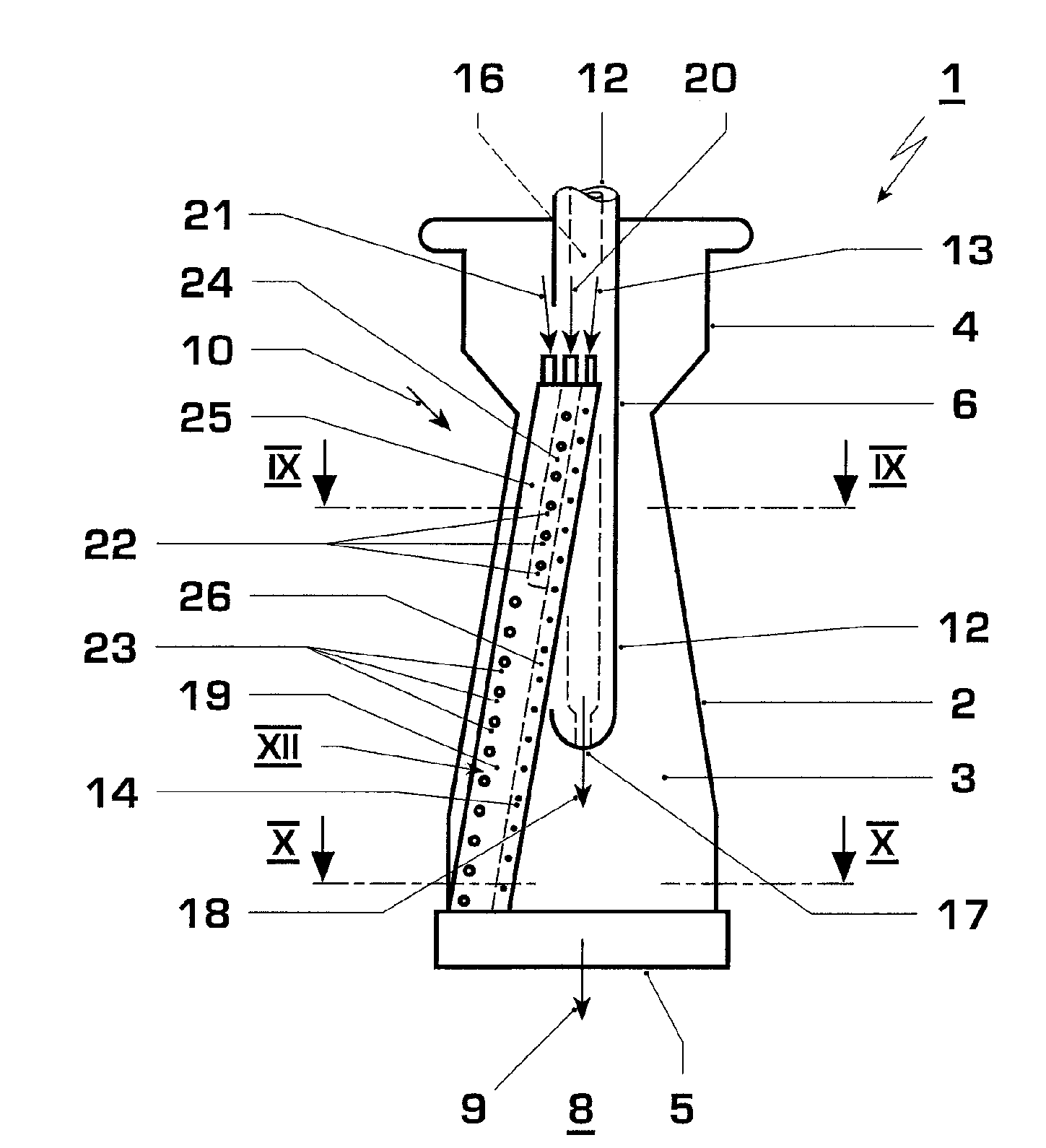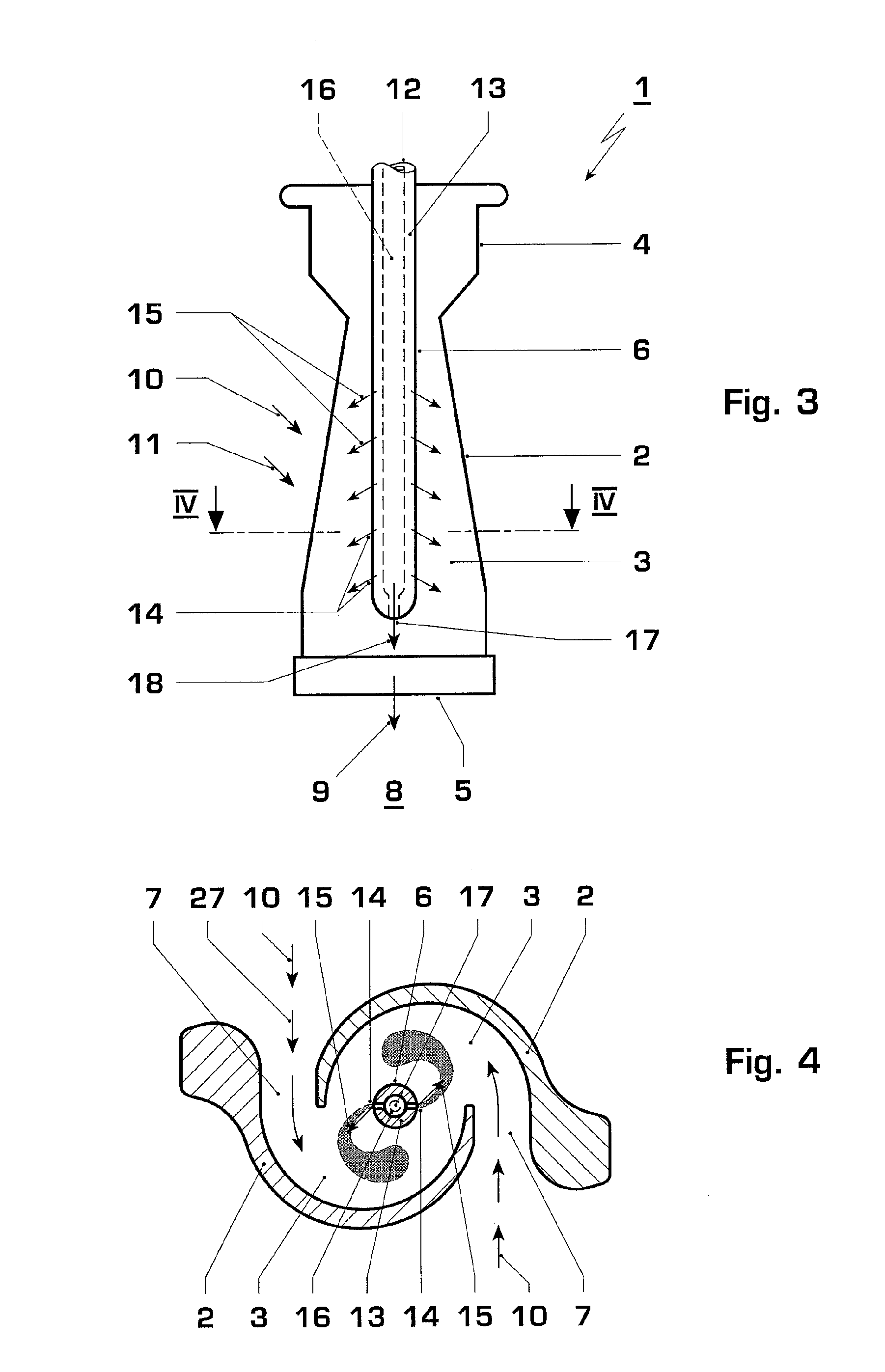Premix burner for a gas turbine combustion chamber
a gas turbine and combustion chamber technology, applied in the direction of combustion types, lighting and heating apparatus, combustion using lump and pulverulent fuel, etc., can solve the problems of unstable flame, affecting the affecting the nox emission and quenching limit of the burner, so as to improve the stability of flame, reduce the risk of explosion, and improve the effect of combustion stability
- Summary
- Abstract
- Description
- Claims
- Application Information
AI Technical Summary
Benefits of technology
Problems solved by technology
Method used
Image
Examples
Embodiment Construction
[0035]Corresponding to FIGS. 1, 3, 5, and 8, a burner 1 according to the invention includes a mixer chamber 3 which is defined by a housing 2. Furthermore, the burner 1 has a burner head 4 which is arranged opposite an outlet opening 5 of the mixer chamber 3. In the embodiments which are shown here, a lance 6 is attached to the burner head 4 and projects centrally into the mixer chamber 3. The lance 6 in this case can be arranged on the burner head 4 in a withdrawable or retractable manner, so that to a certain extent it is retracted into the mixer chamber 3 only when required.
[0036]According to FIGS. 2, 4, 6, 7, 9, and 10, the housing 2 in the embodiments which are shown here is designed so that the mixer chamber 3 has two inlet openings 7 for the oxidator. These inlet openings 7 in this case are arranged and designed so that a tangential inflow, and therefore a concentric vortex system, is formed for the mixer chamber 3. This is achieved in this case by a half-shell type of constr...
PUM
 Login to View More
Login to View More Abstract
Description
Claims
Application Information
 Login to View More
Login to View More - R&D
- Intellectual Property
- Life Sciences
- Materials
- Tech Scout
- Unparalleled Data Quality
- Higher Quality Content
- 60% Fewer Hallucinations
Browse by: Latest US Patents, China's latest patents, Technical Efficacy Thesaurus, Application Domain, Technology Topic, Popular Technical Reports.
© 2025 PatSnap. All rights reserved.Legal|Privacy policy|Modern Slavery Act Transparency Statement|Sitemap|About US| Contact US: help@patsnap.com



